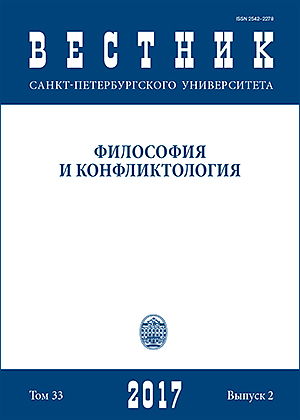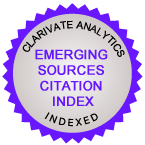ICON AS IMAGE AND AS IDEA: ASPECTS OF BYZANTINE MONUMENTAL ART IN THEIR INTERACTION
DOI:
https://doi.org/10.21638/11701/spbu17.2017.206Abstract
As church architecture evolved from the 5th century, monumental Byzantine art marked out several aspects of icon: the religious, the anthropological, the political, the aesthetic and others. A connection between the political aspect of the icon (as expressed in the figure of the basileus who represented God on Earth), the anthropological aspect (any human being in his expression of the likeness of God, ac-cording to Christian dogma), the aesthetic aspect (mosaics of fresco pictures of biblical personages) became evident by that time. But the correlation of a living creature and its motionless image was interpreted in different ways during different periods of Byzantine history (divided into periods by the epoch of the first Ecumenical Councils of the 4th to 5th centuries), the period of the canonical establish-ment of icon-painting The ‘Second Iconoclasm’ of the 8th century, the Komnenian dynasty (11–13th century) and the 14th and 15th century Palaiologian Renaissance. The subject of the article is the versatility of the icon which strived to affirm God’s presence in the world and sought not only for abstract theological but also for plastic and visual solutions to divine subjects. The aim of the article is to clarify the phenomenon of the icon as resting upon dogmatic, anthropological, political and aesthetic principles of such an image.
The article is methodologically corroborated by the art-historical theories (those of Hans Sedlmayr, Erwin Panofsky and Otto Demus) which explain the transition from the ancient mimesis to the principle which make the image selfsufficient. The former painting, illusionist mission is now assigned to architecture which stresses the corporal and material elements of the Divine cosmos. As the iconpainting canon is established, painting accepts a new principle the spiritualization of the flesh, the principle of joining of the ideal and the material (which set the ground of the Renaissance).
The author researches this multilateralism which aimed at the statement of God on Earth by force of not only theological arguments but also by plastic and visual means. The author concludes that indissoluble aesthetic, religious, and political aspects of the icon make for a specific type of Medieval figurativeness. Refs 12.
Keywords:
image (signum), lack of distance, between a viewer and the icon, iconoclasm, rise of canon, hesychasm, formation of spectator
Downloads
References
Downloads
Published
How to Cite
Issue
Section
License
Articles of "Vestnik of Saint Petersburg University. Philosophy and Conflict Studies" are open access distributed under the terms of the License Agreement with Saint Petersburg State University, which permits to the authors unrestricted distribution and self-archiving free of charge.






